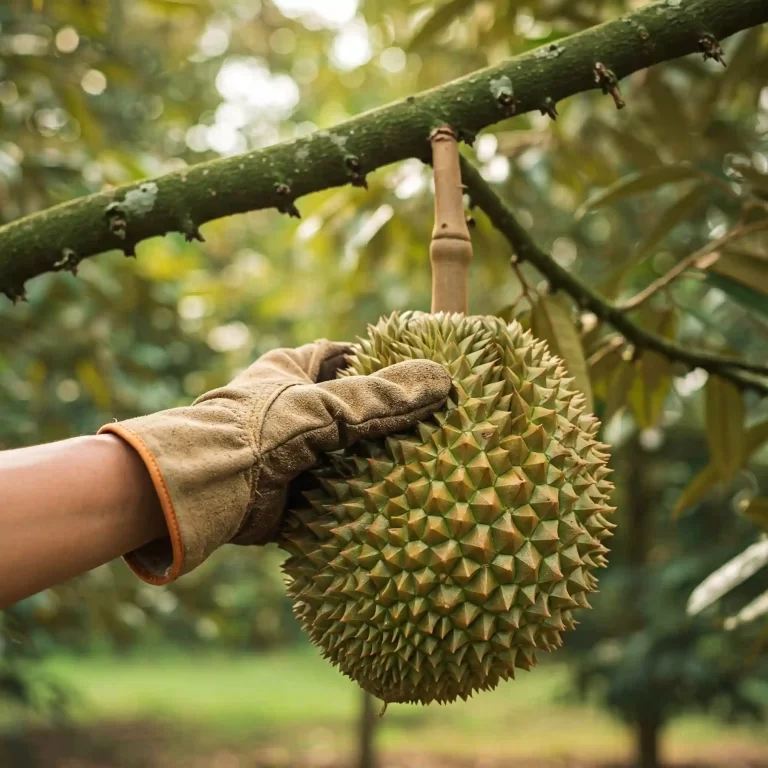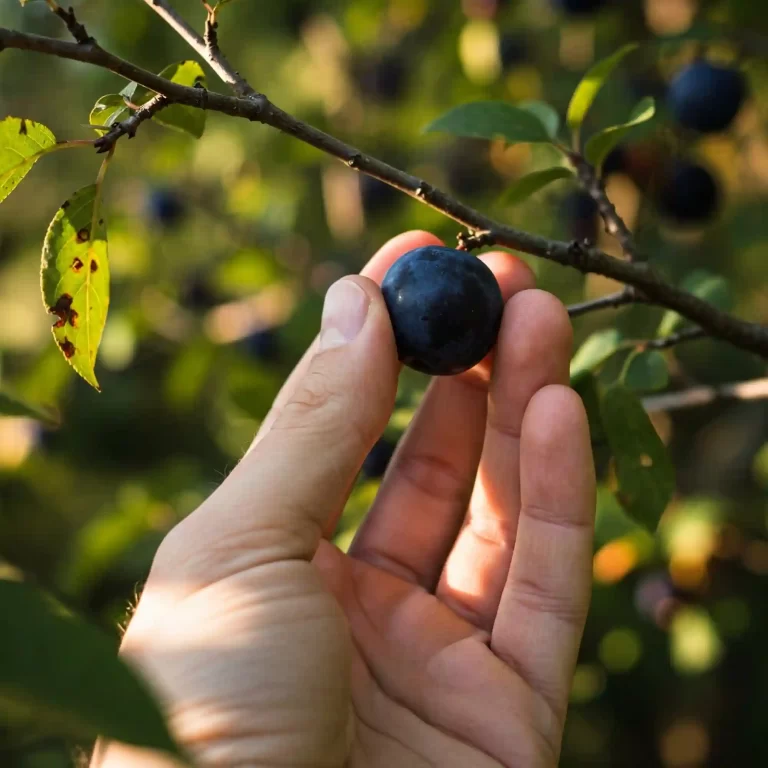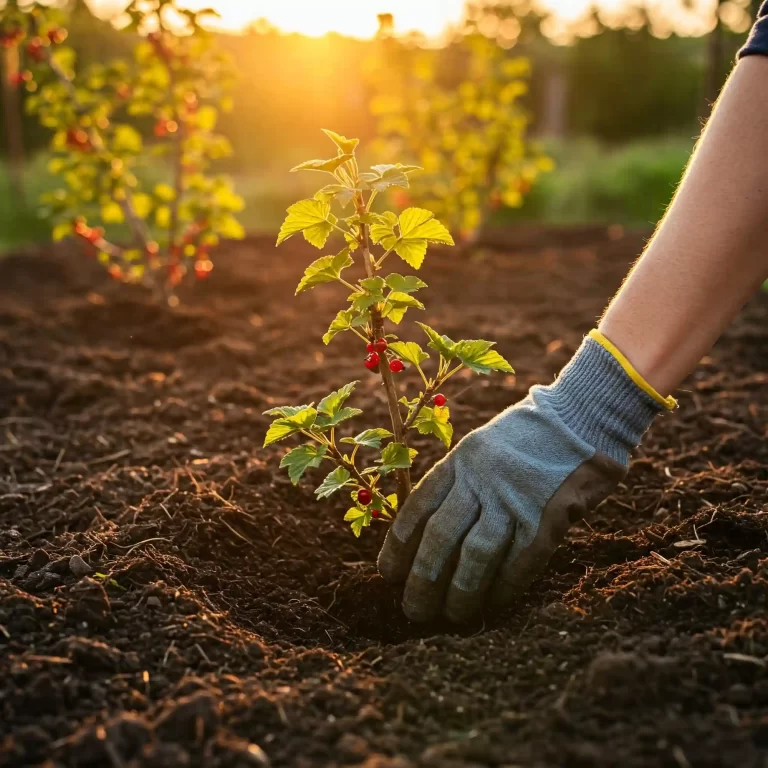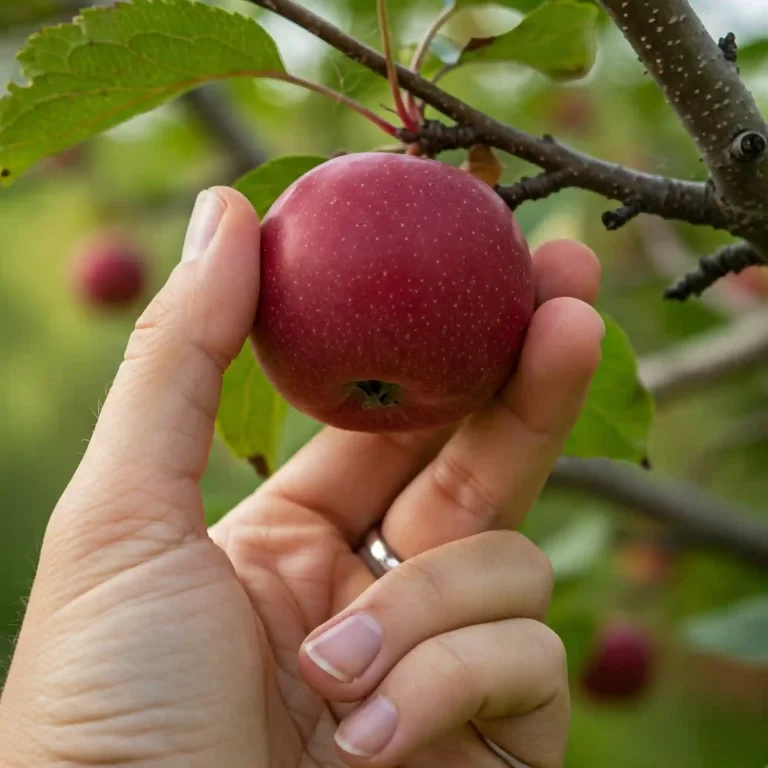Are you struggling with a slow composting process and unpleasant odors from your compost pile?
It can be incredibly frustrating to put in the effort to compost, only to find that your pile isn’t breaking down as quickly as you’d like. The smell can be off-putting, and you might feel like giving up on composting altogether.
The good news is that the right compost aeration tools can make a world of difference. By improving airflow and speeding up decomposition, these tools can help you create rich, healthy compost more efficiently. Let’s dive into everything you need to know about compost aeration tools and how they can transform your gardening experience.
Understanding Compost Aeration
Composting is a natural process that transforms organic waste into valuable soil amendments. However, for composting to be effective, it requires the right balance of air, moisture, and organic materials. Aeration is a critical component of this process, as it ensures that oxygen reaches all parts of the compost pile, promoting the activity of aerobic microorganisms that break down the organic matter.
Why Aeration Matters
Aeration is essential for several reasons:
- Promotes Aerobic Decomposition: Aerobic microorganisms need oxygen to thrive. These microbes are more efficient at breaking down organic matter compared to anaerobic microorganisms, which operate in oxygen-deprived environments and produce unpleasant odors.
- Prevents Odors: Proper aeration helps prevent the development of anaerobic conditions, which can lead to the production of foul-smelling gases like ammonia and hydrogen sulfide.
- Regulates Temperature: Aeration helps regulate the temperature of the compost pile. As microorganisms break down organic matter, they generate heat. Aeration helps distribute this heat evenly, preventing overheating and ensuring that the pile remains within the optimal temperature range for decomposition.
- Speeds Up Decomposition: By providing a steady supply of oxygen, aeration accelerates the composting process, allowing you to produce finished compost more quickly.
How Aeration Works
Aeration involves introducing air into the compost pile to ensure that oxygen is evenly distributed. This can be achieved through various methods, including:
- Turning the Pile: Manually turning the compost pile with a pitchfork or shovel is a common method of aeration. This process involves physically moving the materials to introduce air pockets and mix the contents.
- Using Aeration Tools: Specialized compost aeration tools are designed to make the process easier and more efficient. These tools typically feature tines, blades, or augers that penetrate the compost pile and create air channels.
- Passive Aeration: Some compost bins and systems are designed with built-in aeration features, such as perforated pipes or vents, that allow air to flow naturally through the pile.
Types of Compost Aeration Tools
There are several types of compost aeration tools available, each with its own unique features and benefits. Here are some of the most popular options:
- Compost Crank: The Compost Crank is a corkscrew-shaped tool that is twisted into the compost pile and then pulled up to create air channels. It is easy to use and effective at aerating the pile.
- Compost Aerator: This tool typically features a handle with folding tines or blades that can be inserted into the compost pile and then pulled up to create air pockets. The Bosmere Compost Aerator is a popular example.
- Garden Claw: The Garden Claw is a versatile tool that can be used for both compost aeration and general garden tilling. It features rotating tines that break up and aerate the compost.
- Compost Turner: The Yard Butler Compost Turner is designed to create air pockets in the compost pile by twisting and lifting the materials. It is a durable and effective tool for maintaining a healthy compost pile.
- Tiller: A tiller, such as the Fiskars Long Handle Steel Tiller, can be used to break up and aerate the compost pile. This tool is particularly useful for larger compost piles.
Benefits of Using Compost Aeration Tools
Using compost aeration tools offers several benefits:
- Efficiency: Aeration tools make the process of introducing air into the compost pile quicker and easier compared to manual turning.
- Improved Compost Quality: By ensuring that the compost pile is well-aerated, these tools help produce high-quality compost that is rich in nutrients and free from unpleasant odors.
- Reduced Labor: Aeration tools reduce the physical effort required to maintain a compost pile, making composting more accessible and enjoyable.
- Consistency: Regular use of aeration tools helps maintain consistent conditions within the compost pile, promoting steady decomposition and reducing the risk of issues such as compaction or anaerobic conditions.
Case Study: The Impact of Aeration on Compost Quality
A study conducted by the University of California found that compost piles that were regularly aerated produced finished compost in nearly half the time compared to piles that were not aerated. The aerated piles also had higher nutrient content and fewer odors, demonstrating the significant impact that proper aeration can have on compost quality.
Choosing the Right Compost Aeration Tool
Selecting the right compost aeration tool depends on several factors, including the size of your compost pile, your physical capabilities, and your personal preferences. Here are some key considerations to keep in mind when choosing a compost aeration tool:
Size of Your Compost Pile
The size of your compost pile will influence the type of aeration tool that is most suitable. For small to medium-sized piles, handheld tools such as the Compost Crank or Garden Claw are often sufficient. These tools are easy to maneuver and can effectively aerate smaller piles.
For larger compost piles, you may need a more robust tool, such as a tiller or a compost turner. These tools are designed to handle larger volumes of material and can make the process of aerating a large pile more manageable.
Physical Capabilities
Your physical capabilities and comfort level are important factors to consider when choosing a compost aeration tool. Some tools require more physical effort to use than others. For example, manually turning a compost pile with a pitchfork can be physically demanding, especially for individuals with limited strength or mobility.
Tools like the Compost Crank and Bosmere Compost Aerator are designed to be user-friendly and require less physical effort. These tools are often a good choice for individuals who want an effective aeration solution without the strain of manual turning.
Personal Preferences
Personal preferences also play a role in selecting the right compost aeration tool. Some gardeners prefer tools that are versatile and can be used for multiple purposes, such as the Garden Claw, which can be used for both compost aeration and garden tilling.
Others may prioritize ease of use and efficiency, opting for tools like the Yard Butler Compost Turner, which is specifically designed for aerating compost. Consider what features are most important to you and choose a tool that aligns with your preferences.
Comparing Different Compost Aeration Tools
To help you make an informed decision, here is a comparison of some popular compost aeration tools:
| Tool Name | Features | Pros | Cons |
| Compost Crank | Corkscrew design, easy to use | Effective, user-friendly, minimal effort | May not be suitable for large piles |
| Bosmere Compost Aerator | Folding tines, plunger-style | Efficient, versatile, easy to maneuver | Requires some physical effort |
| Garden Weasel Claw | Rotating tines, multi-purpose | Versatile, durable, easy to use | May not penetrate dense piles easily |
| Yard Butler Compost Turner | Twisting and lifting action | Durable, effective, reduces physical strain | Can be bulky for small piles |
| Fiskars Long Handle Tiller | Arrow-tip tines, long handle | Durable, efficient for large piles | Requires more physical effort |
Tips for Using Compost Aeration Tools
To get the most out of your compost aeration tools, follow these tips:
- Aerate Regularly: Aim to aerate your compost pile at least once a week to maintain optimal conditions for decomposition.
- Mix Thoroughly: When using aeration tools, make sure to mix the compost thoroughly to ensure that all parts of the pile receive adequate oxygen.
- Monitor Moisture Levels: Aeration can help regulate moisture levels, but it’s important to monitor the moisture content of your compost pile and adjust as needed. The pile should be damp but not waterlogged.
- Combine with Other Composting Practices: Aeration is just one aspect of successful composting. Combine it with other best practices, such as maintaining a balanced mix of green and brown materials, to achieve the best results.
Best Practices for Compost Aeration
Proper aeration is crucial for maintaining a healthy and efficient compost pile. Here are some best practices to ensure that your compost is well-aerated and decomposes effectively:
Maintain the Right Balance of Materials
A well-balanced compost pile contains a mix of green (nitrogen-rich) and brown (carbon-rich) materials. Green materials include kitchen scraps, grass clippings, and coffee grounds, while brown materials include leaves, straw, and cardboard. Maintaining the right balance of these materials helps create an environment that supports aerobic decomposition.
Layering Technique
Layering is a technique that involves alternating layers of green and brown materials in the compost pile. This method helps ensure that the pile remains well-aerated and that the materials decompose evenly. Start with a layer of coarse brown materials at the bottom to promote airflow, followed by a layer of green materials. Continue alternating layers until the pile is complete.
Turning the Pile
Regularly turning the compost pile is one of the most effective ways to ensure proper aeration. Use a pitchfork, shovel, or a compost aeration tool to turn the pile at least once a week. This process helps to mix the materials, introduce air, and prevent the pile from becoming compacted.
Using Aeration Tools
As mentioned earlier, compost aeration tools can make the process of turning and aerating the pile much easier. Tools like the Compost Crank, Bosmere Compost Aerator, and Yard Butler Compost Turner are designed to penetrate the pile and create air channels, promoting better airflow and faster decomposition.
Monitoring Temperature
Temperature is a key indicator of the composting process. A well-aerated compost pile will generate heat as microorganisms break down the organic matter. Use a compost thermometer to monitor the temperature of your pile. The ideal temperature range for composting is between 135°F and 160°F (57°C to 71°C). If the temperature drops below this range, it may be a sign that the pile needs more aeration.
Managing Moisture Levels
Proper moisture levels are essential for effective composting. The compost pile should be as damp as a wrung-out sponge. If the pile is too dry, decomposition will slow down, and if it is too wet, it can become anaerobic and produce unpleasant odors. Aeration helps to regulate moisture levels by allowing excess moisture to evaporate and preventing waterlogging.
Avoiding Compaction
Compaction can occur when the compost pile becomes too dense, restricting airflow and creating anaerobic conditions. To prevent compaction, avoid adding large amounts of heavy, wet materials at once. Instead, mix these materials with lighter, dry materials to maintain a balanced and well-aerated pile.
Using Passive Aeration Techniques
In addition to active aeration methods like turning and using aeration tools, you can also incorporate passive aeration techniques into your composting routine. For example, placing perforated pipes or vents within the compost pile can help facilitate natural airflow. Some compost bins are designed with built-in aeration features that promote passive aeration.
Case Study: Successful Composting with Aeration Tools
A community garden in Portland, Oregon, implemented a composting program using a combination of manual turning and compost aeration tools. By regularly aerating their compost piles, they were able to produce high-quality compost in just three months. The garden reported a significant reduction in odors and an increase in the nutrient content of their compost, demonstrating the effectiveness of proper aeration practices.
Common Mistakes to Avoid in Compost Aeration
While compost aeration is a relatively straightforward process, there are some common mistakes that can hinder the effectiveness of your composting efforts. Here are some pitfalls to watch out for and how to avoid them:
Over-Aerating the Pile
While aeration is important, it’s possible to overdo it. Over-aerating the compost pile can lead to excessive drying, which can slow down the decomposition process. Aim to aerate the pile once a week, or more frequently if you notice signs of compaction or anaerobic conditions. If the pile becomes too dry, add water or more green materials to restore the moisture balance.
Neglecting to Aerate
On the other hand, neglecting to aerate the compost pile can lead to anaerobic conditions, which produce unpleasant odors and slow down decomposition. Make aeration a regular part of your composting routine to ensure that the pile remains well-oxygenated and active.
Adding Too Much of One Material
A balanced compost pile requires a mix of green and brown materials. Adding too much of one type of material can disrupt the balance and create conditions that are not conducive to aerobic decomposition. For example, adding too many green materials can make the pile too wet and compact, while adding too many brown materials can make it too dry. Aim for a ratio of roughly 2:1 browns to greens.
Ignoring the Signs of Poor Aeration
There are several signs that your compost pile may not be receiving enough aeration, including:
- Unpleasant Odors: A foul smell is a clear indication of anaerobic conditions. If your compost pile smells like ammonia or rotten eggs, it needs more aeration.
- Slow Decomposition: If your compost pile is not breaking down as quickly as expected, it may be due to a lack of oxygen. Regular aeration can help speed up the process.
- Excessive Moisture: A waterlogged compost pile can become anaerobic. If you notice that your pile is too wet, aerate it and add more dry, brown materials to absorb the excess moisture.
Using the Wrong Tools
Using the wrong tools for aeration can make the process more difficult and less effective. For example, a pitchfork may not be as efficient at creating air channels as a specialized compost aeration tool. Invest in the right tools for your composting needs to ensure that you can aerate the pile effectively and with minimal effort.
Case Study: Learning from Mistakes
A small urban farm in Chicago experienced issues with their compost pile due to neglecting aeration. The pile became compacted and produced strong odors, indicating anaerobic conditions. After investing in a Compost Crank and implementing a regular aeration schedule, the farm was able to restore the health of their compost pile. The odors dissipated, and the decomposition process accelerated, resulting in high-quality compost for their crops.
Advanced Compost Aeration Techniques
For those looking to take their composting to the next level, there are several advanced aeration techniques that can further enhance the efficiency and effectiveness of your compost pile. These methods are particularly useful for larger composting operations or for gardeners who want to maximize the quality of their compost.
Forced Aeration Systems
Forced aeration systems use mechanical means to introduce air into the compost pile. These systems typically involve the use of blowers or fans that force air through perforated pipes or ducts embedded in the compost pile. Forced aeration systems can be highly effective at maintaining optimal oxygen levels and temperature, making them ideal for large-scale composting operations.
Aerated Static Pile Composting
Aerated static pile composting is a method that involves creating a large, static pile of compost materials and using a system of perforated pipes to introduce air into the pile. The pipes are connected to a blower that periodically forces air through the pile, ensuring that it remains well-aerated without the need for manual turning. This method is efficient and can produce high-quality compost in a relatively short amount of time.
Vermicomposting with Aeration
Vermicomposting involves the use of worms to break down organic matter. While worms naturally aerate the compost as they move through it, additional aeration can help enhance the process. Using aeration tools to gently turn the vermicompost can introduce more oxygen and prevent compaction, creating an optimal environment for the worms to thrive.
Bokashi Composting with Aeration
Bokashi composting is an anaerobic fermentation process that breaks down organic matter using beneficial microbes. While traditional Bokashi composting does not require aeration, incorporating aeration after the fermentation process can help speed up the final decomposition. After the Bokashi process is complete, the fermented materials can be added to a compost pile and aerated to finish the composting process.
Using Biochar for Aeration
Biochar is a form of charcoal that is used as a soil amendment. When added to a compost pile, biochar can help improve aeration by creating air pockets and enhancing the structure of the compost. Biochar also has the added benefit of retaining nutrients and moisture, making it a valuable addition to any composting system.
Case Study: Implementing Advanced Techniques
A large organic farm in California implemented an aerated static pile composting system to manage their composting needs. By using a blower and perforated pipes, they were able to maintain optimal oxygen levels and temperature throughout the composting process. The farm reported a significant increase in the efficiency of their composting operation, producing high-quality compost in just a few months. The use of advanced aeration techniques allowed them to scale up their composting efforts and improve the overall health of their soil.
The Future of Compost Aeration
As composting continues to gain popularity as a sustainable waste management practice, new technologies and innovations are emerging to improve the efficiency and effectiveness of compost aeration. Here are some trends and developments to watch for in the future of compost aeration:
Smart Composting Systems
Smart composting systems use sensors and automation to monitor and manage the composting process. These systems can track temperature, moisture, and oxygen levels in real-time, providing valuable data to optimize aeration and other composting parameters. Smart composting systems can also automate the aeration process, using fans or blowers to introduce air as needed based on sensor readings.
Renewable Energy-Powered Aeration
Renewable energy sources, such as solar or wind power, can be used to power aeration systems, making composting even more sustainable. Solar-powered blowers or fans can provide the necessary airflow for compost piles without relying on traditional energy sources, reducing the carbon footprint of composting operations.
Community Composting Initiatives
Community composting initiatives are becoming increasingly popular in urban areas, where space for individual composting may be limited. These initiatives often involve the use of centralized composting facilities with advanced aeration systems to manage organic waste from multiple households or businesses. By pooling resources and utilizing advanced aeration techniques, community composting initiatives can efficiently process large volumes of organic waste and produce high-quality compost for local use.
Educational Programs and Workshops
As awareness of the benefits of composting grows, educational programs and workshops are being developed to teach individuals and communities about effective composting practices, including aeration. These programs provide hands-on training and resources to help people start and maintain successful composting systems, promoting sustainable waste management practices.
Innovations in Compost Aeration Tools
The development of new and improved compost aeration tools is another exciting trend. Manufacturers are continually innovating to create tools that are more efficient, user-friendly, and effective. For example, some new tools feature ergonomic designs that reduce physical strain, while others incorporate advanced materials that enhance durability and performance.
Integration with Urban Agriculture
Urban agriculture is on the rise, and composting plays a crucial role in these initiatives. Integrating compost aeration techniques into urban farming practices can help maximize the productivity and sustainability of urban gardens. By using compost aeration tools and methods, urban farmers can produce high-quality compost to enrich their soil and support healthy plant growth.
Research and Development
Ongoing research and development in the field of composting are leading to new insights and advancements in compost aeration. Scientists and researchers are exploring innovative ways to optimize the composting process, including the use of microbial inoculants, biochar, and other additives that can enhance aeration and decomposition. These advancements have the potential to revolutionize composting practices and make them more efficient and effective.
Case Study: Urban Composting Innovation
A startup in New York City has developed a smart composting system that uses sensors and automation to manage the composting process in urban environments. The system monitors temperature, moisture, and oxygen levels in real-time and automatically adjusts aeration to maintain optimal conditions. This innovative approach has enabled the startup to efficiently process organic waste from multiple households and produce high-quality compost for urban gardens. The success of this project highlights the potential for technology to transform composting practices and support sustainable urban agriculture.
Conclusion
Compost aeration is a critical component of successful composting, ensuring that your compost pile remains healthy, active, and efficient. By understanding the importance of aeration, choosing the right tools, and following best practices, you can create high-quality compost that enriches your garden and supports sustainable gardening practices.
Whether you’re a seasoned gardener or just starting out, investing in the right compost aeration tools and techniques can make a significant difference in the quality and speed of your composting efforts. From manual tools like the Compost Crank and Garden Claw to advanced systems like forced aeration and smart composting, there are options to suit every need and preference.
As you embark on your composting journey, remember that regular aeration is key to maintaining a healthy compost pile. By incorporating the tips and techniques outlined in this guide, you’ll be well on your way to producing rich, nutrient-dense compost that will benefit your garden and the environment.
Happy composting! If you have any questions or need further assistance, feel free to reach out. I’m here to help you achieve composting success.



